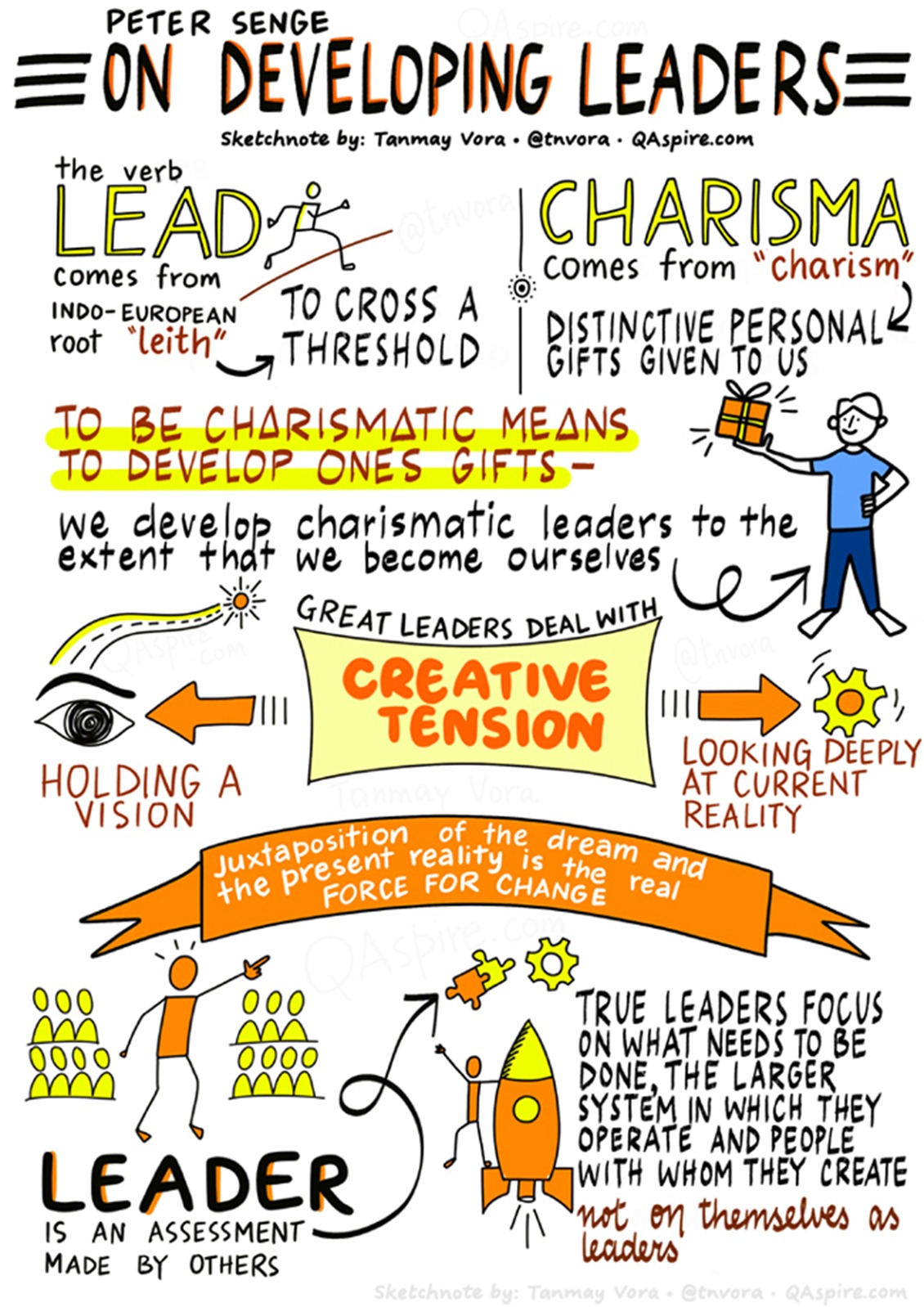Peter Senge on Leadership Development
Tanmay Vora
Real leadership does not happen after we get hold of lofty titles and peak positions in the hierarchy.
Real leadership happens when we are aware of our gifts (given to us), when we hone those gifts in the spirit of serving others, when we find whitespaces (gap between our vision and the current reality) and put our gifts to good use in filling up those gaps. Real leadership happens irrespective of external validations and titles. In fact, titles and external validations are only the by-products of the pursuit.
The reward of leadership is not just the difference we make to the context or to the people we work with, but also the kind of person we may become as a result of the pursuit.
Peter Senge on Developing Leaders
“The Fifth Discipline – The Art and Practice of Learning Organization” by Peter Senge is such a profound book that each time I revisit it, I find something deep in a way that it serves as a timely reminder for initiatives that I may be working on. The book has an entire section that really clarifies what being a leader really looks like.
It was interesting to know that the root of the word “leadership” comes from Indo-European word “leith” which means to cross a threshold. It points to having courage to extend the boundaries, think differently and going beyond the normal call of duty.
The heart of leadership development lies in the word “charisma” as Peter Senge clarifies it.
“In fact, the word ‘charism’ comes from the Catholic church, where it means one’s distinctive personal “gifts” given by the Holy spirit. To be charismatic, then, means to develop one’s gift. In short, we develop as true charismatic leaders to the extent that we become ourselves.”
The section outlines the concept of creative tension – that all great leaders have to deal with the tension between holding a vision and deeply assessing the current reality. It is the gap between the two that becomes a force of change. It is the source of all great leadership – at a personal level as well at an organizational level.
Finally, Senge argues that real leaders rarely see themselves as leaders. Instead, they focus on doing the work – on what needs to be done, the larger system in which they operate and people they work with.
Here is a visual summary of a particular section focusing on leadership development.
Updated: Visual Leadership Pack of 68+ HD Sketchnotes
If you liked the sketchnote summary above, check out the Visual Leadership Pack of HD Sketchnotes – a compilation of high-resolution sketchnotes with 68+ powerful (and timeless) ideas to elevate your leadership and learning game.


If a leader lacks other important skills or sensibilities, truth and compassion for example, the power to charm and captivate might steer us in the wrong direction. See The Atlantic piece: https://www.theatlantic.com/science/archive/2016/10/why-people-fall-for-charismatic-leaders/503906/
While many people naturally have charisma, charismatic leadership tactics (CLT) can also be learned- see a good review in HBR:
https://hbr.org/2012/06/learning-charisma-2
Thought provoking post Tanmay!! Great visual note.
@Setu Vora: Thank you for sharing excellent resources to build on the topic.
Excellent visual summary. Thanks Tanmay.
The creative tension and the optimal structure to create and sustain it is derived from the structural dynamics works on Robert Fritz. (He contributed to ‘the Fifth discipline’ book). ‘The path of least resistance’ is the best book in this subject.
links to his books
https://www.amazon.in/Robert-Fritz/e/B000AP8TRG/
Thanks for the pointer. I’ll certainly check it out.